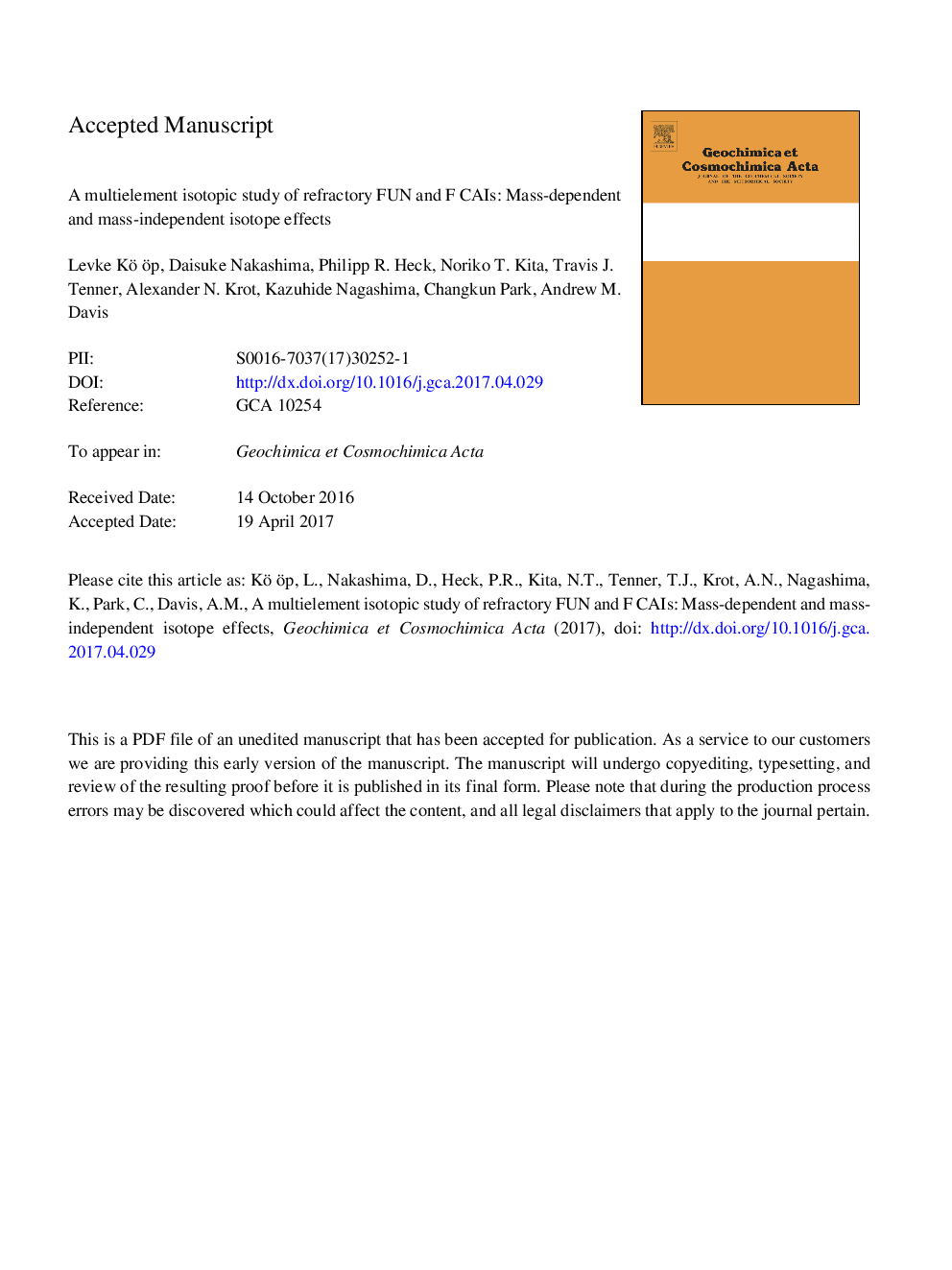| Article ID | Journal | Published Year | Pages | File Type |
|---|---|---|---|---|
| 8911002 | Geochimica et Cosmochimica Acta | 2018 | 44 Pages |
Abstract
The initial 26Al/27Al ratios inferred from model isochrons span a range from <1 Ã 10â6 to canonical (â¼5 Ã 10â5). The CAIs show a mutual exclusivity relationship between inferred incorporation of live 26Al and the presence of resolvable anomalies in 48Ca and 50Ti. Furthermore, a relationship exists between 26Al incorporation and Î17O in the hibonite-rich CAIs (i.e., 26Al-free CAIs have resolved variations in Î17O, while CAIs with resolved 26Mg excesses have Î17O values close to â23â°). Only the grossite-rich CAI has a relatively enhanced Î17O value (â¼â17â°) in spite of a near-canonical 26Al/27Al. We interpret these data as indicating that fractionated hibonite-rich CAIs formed over an extended time period and sampled multiple stages in the isotopic evolution of the solar nebula, including: (1) an 26Al-poor nebula with large positive and negative anomalies in 48Ca and 50Ti and variable Î17O; (2) a stage of 26Al-admixture, during which anomalies in 48Ca and 50Ti had been largely diluted and a Î17O value of â¼â23â° had been achieved in the CAI formation region; and (3) a nebula with an approximately canonical level of 26Al and a Î17O value of â¼â23â° in the CAI formation region.
Keywords
Related Topics
Physical Sciences and Engineering
Earth and Planetary Sciences
Geochemistry and Petrology
Authors
Levke Kööp, Daisuke Nakashima, Philipp R. Heck, Noriko T. Kita, Travis J. Tenner, Alexander N. Krot, Kazuhide Nagashima, Changkun Park, Andrew M. Davis,
